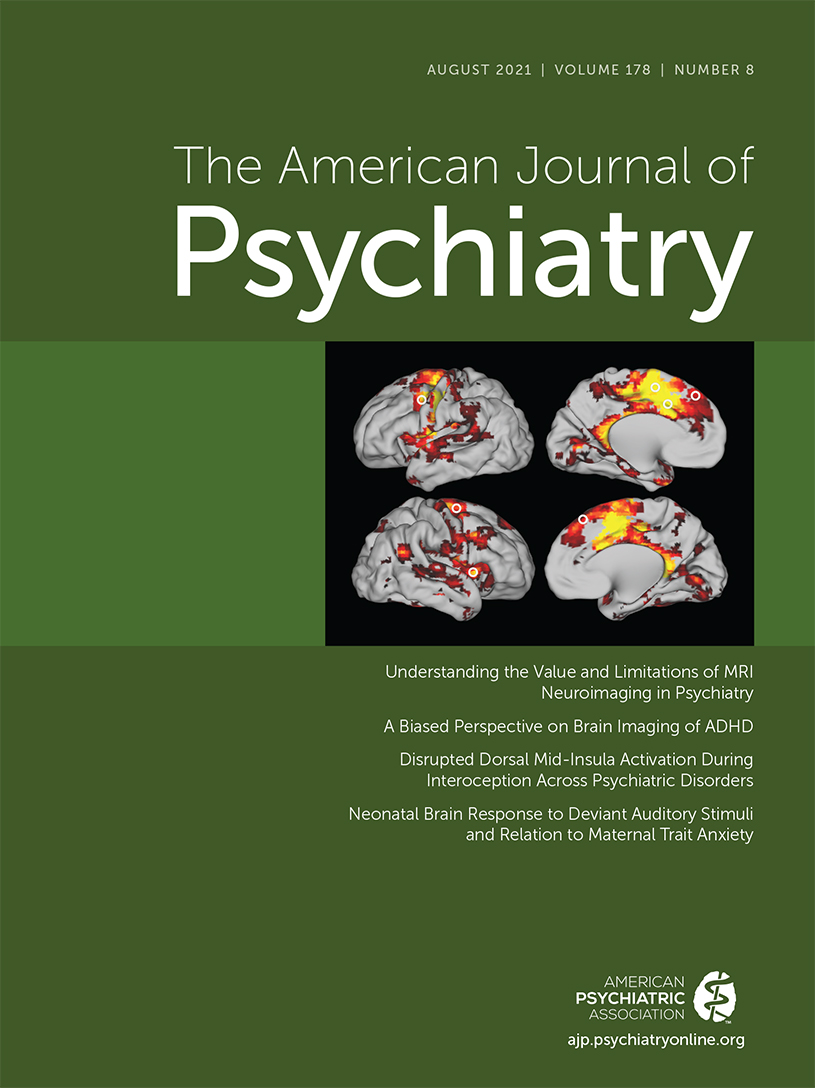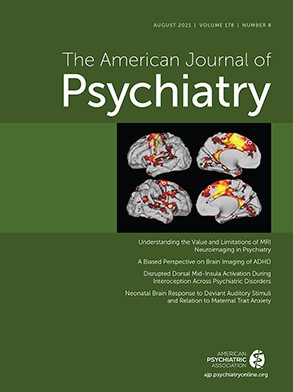In this issue of the
Journal, Riglin et al. (
1) highlight a number of issues relevant to how we conceptualize autism as a disorder as well as how we measure autism symptoms across clinical and nonclinical populations. Using longitudinal data from a population-based sample (from the Avon Longitudinal Study of Parents and Children), the study provides critical information about changes in social behaviors from childhood to adulthood. Such data are rare. The study builds on numerous reports on the same sample (
2–
5) to describe increases in the number of young adults reported to have significant difficulties in social situations. However, the primary conclusion—that there may be a group of individuals with “late-emerging” autism spectrum disorder (ASD) symptoms—is based on the premise that higher levels of behavior problems that negatively affect social interactions are attributable to greater autism symptomatology. We question this premise.
Citing three reviews but no empirical data, the article begins with the statement that it has been suggested that autism spectrum disorders lie at the end of a continuous distribution. However, carefully considered data have repeatedly not supported this suggestion. Numerous analyses of commonly used “autistic trait” measures have shown different distributions and measurement noninvariance between neurotypical and ASD populations (
6–
8). It has been argued that, while continuous symptom measures such as the Social Responsiveness Scale, the Autism Spectrum Quotient, and the Social and Communication Disorders Checklist (SCDC) (
6,
9) have real value in identifying individuals with higher levels of social problems, scores from ASD samples must be considered separately from scores from other samples because the items have different meanings to the different reporters. Thus, even if ASD traits are truly distributed along a single continuum with people with ASD at the extreme high end of the distribution, the instruments used to measure these traits generally do not reflect a single normal distribution except in highly selected samples (
6,
7,
10,
11). This raises serious questions about the conclusions that can be drawn from the application of purported ASD trait or symptom measures to either non-ASD or ASD populations without clearer caveats.
In the sense that people with autism tend to have significantly higher scores on the SCDC, this measure is “associated” with autism. However, as shown in
Box 1, the SCDC describes social difficulties that may result from any number of other conditions. Much research has shown that autistic children receive higher scores on the SCDC, but so do children with other diagnoses (specificity ranges from 0.28 to 0.69 [
9,
12]). As researchers, we need to be more straightforward about acknowledging the evidence that statements about social deficits (for example, “Behavior often disrupts family life,” or “Difficult to reason with when upset,” or “Does not respond when told to do something”) are not specific to autism, do not describe the primary deficits in ASD, and very well may not mean the same thing for parents or individuals with ASD and those without. The authors acknowledge these issues in a thoughtful discussion, but the title of the paper attests to the kind of claims that, in the end, are made.
We propose that measures such as the SCDC provide the opportunity to assess the social consequences or outcomes of difficulties of different types but tell us little about the roots of those difficulties (
13). Findings that SCDC scores are related to polygenic risk autism scores simply provide further support that links between neurobiology and behavior are not straightforward. On its face, the SCDC also fails to capture the breadth of social difficulties typically associated with ASD, and it does not include descriptions of behaviors from the restricted and repetitive behavior (RRB) domain. While we do not yet understand the nature of the relationship between social communication deficits and the heterogeneous group of behaviors referred to as RRBs, including sensory issues and strong interests, the importance of RRBs in diagnosis and outcome has been repeatedly demonstrated empirically (
14), as well as supported by self-reports from autistic individuals (
15).
Conflating poor social functioning with autism has been a steadily growing trend as researchers have sought large samples, particularly in genetic studies. Difficulties in reciprocity, basic nonverbal communication, and relationships are required components of an ASD diagnosis, but these are not directly addressed by the SCDC and other more general instruments, in part because they are less relevant to people without autism. On the other hand, social
functioning, as a developmental domain, is relevant for all individuals, regardless of diagnosis, and at all stages of life. Therefore, to consider the importance of social difficulties only within the context of autism is doing a disservice to the many nonautistic individuals who experience clinically significant deficits in social functioning for various reasons, as well as to autism stakeholders. Autism should not be used to imply that complex issues of social consequences of developmental and psychiatric disorders all fall under one construct. As the authors note in their
online supplement (Figure S3A-B), in fact a much smaller fourth class appeared in some analyses in this study, comprising about 2% of the population that was linked to previous autism diagnoses and early high SCDC scores that did not overlap with the three other groups. When three data points were required for inclusion in the trajectories, resulting in a reduced sample (Figure S3C), the class disappeared. Thus, what was formerly described as autism (
5) was not discussed except in a brief reference to other British epidemiological work (
16).
A few autistic individuals are included in the 6.5% of males and females who exhibited steady increases in SCDC scores. The larger group had high self-rated and parent-rated distress and impairment and were less likely to be working or in education. It certainly is possible that a small number of adults who have ASD were not identified earlier in life for various reasons, but 6.5% seems unlikely. It is also possible that some individuals “camouflaged” their limitations, but a simpler hypothesis, which the authors raise as an alternative, is that some young adults, over time, actually have difficulties, with marked social consequences, without having autism. Young adults with steadily increasing SCDC scores had a somewhat lower IQ than the majority of the sample, and more elevated internalizing symptoms, and some had a history of neurodevelopmental delays, but they had low levels of parent-reported social communication deficits in childhood. This increase could be a function of emerging social difficulties related to psychiatric diagnoses like mood and anxiety disorders or schizophrenia spectrum disorders and/or related to ongoing challenges associated with childhood-onset neurodevelopmental disorders like intellectual disability, language disorder, and/or ADHD. Regardless of the extent to which individuals with high SCDC scores show similarities or dissimilarities to those with autism, these young adults are important in their own right, and their difficulties warrant serious attention.
At present, our conceptualization of ASD as a developmental disorder rooted in basic impairments in the acquisition of developmentally expected social communication behavior is at odds with the idea of “late-emerging autism.” However, this does not preclude individuals from manifesting new or increased difficulties in social functioning as they age and as individual and environmental factors interact to increase risk for poor social outcomes at various developmental stages. Just as it is now recognized that autism may be associated with relative strengths and/or challenges in developmental domains other than social communication, people without autism exhibit various strengths and challenges in social functioning. This carefully analyzed, thoughtful paper with an unfortunate title is important in reminding us that the importance of behavior in social contexts is not limited to childhood, and that we must attend to ongoing and emerging social challenges throughout development, including in adulthood. Still, scores on general measures of difficulties in different social situations need to be referred to precisely as what they are, measures of functioning in social contexts, rather than as “autism symptom measures,” given that autism symptoms are only one of many potential explanations for difficulties that have negative consequences for social functioning.

